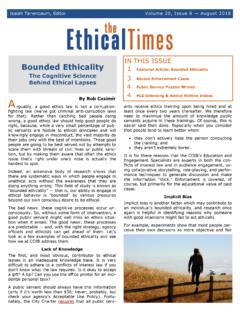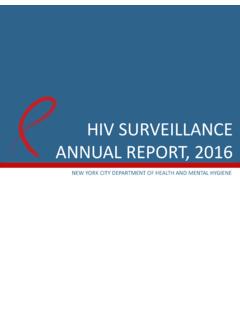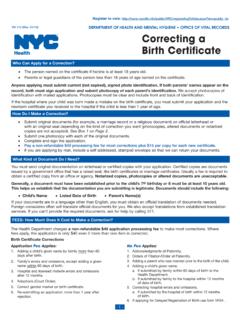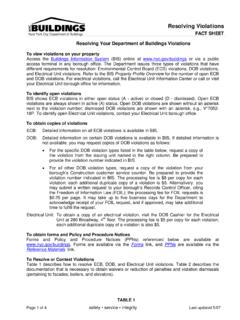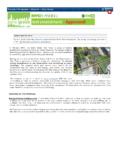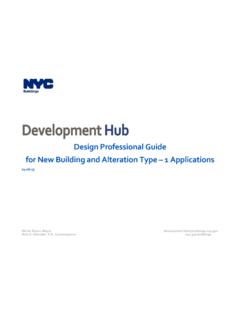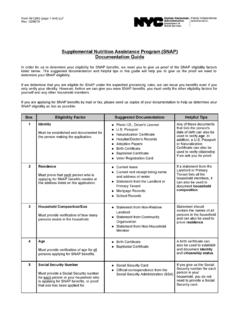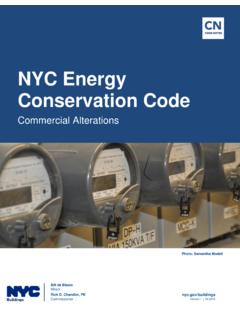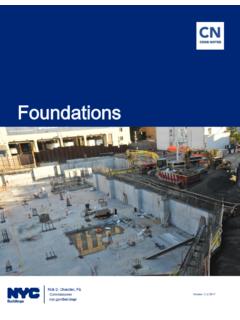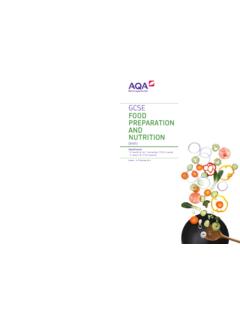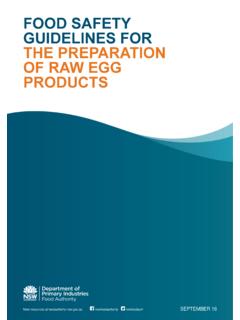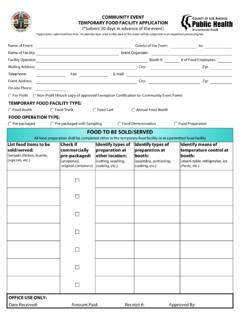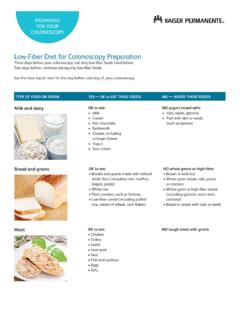Transcription of ARTICLE 81 FOOD PREPARATION AND FOOD …
1 ARTICLE 81. food PREPARATION AND food ESTABLISHMENTS. Scope. Definitions. Approved sources of food . Permit requirements; technical review and pre-permitting inspections for food service establishments and non-retail food processing establishments. Prevention of imminent or public health hazards food : sanitary PREPARATION , protection against contamination. Foods containing artificial trans fat. Potentially hazardous (time and temperature control for safety). foods. Time as a public health control; exception to required holding temperatures of potentially hazardous (temperature control for safety). foods. Consumer advisory; serving raw or undercooked foods.
2 Reduced oxygen packaging; cook chill and sous vide processing. food workers: health; hygienic practices food protection course. General requirements: design, construction, materials and maintenance. Cold and hot storage and holding facilities. Lighting and ventilation. Plumbing and water supply. Hand wash sinks. Employee and patron toilets. Integrated pest management. Garbage and waste disposal. Live animals. Cleaning of premises, equipment and utensils. Dishwashing and ware washing. Outdoor cooking, food and beverage PREPARATION facilities. [ repealed]. [ repealed]. [ repealed]. Sealing unclean equipment, utensils and vehicles; denial, suspension and revocation of permits; enforcement; padlocking.
3 Dispensing devices used to dispense food ; construction, cleanliness, refrigeration, safety. Reporting complaints of patrons' illness, emergency occurrences. [ repealed]. Refillable, returnable containers. [ repealed]. Sodium warning. Posting of calorie information. Grading of inspection results and posting of grades by certain food service establishments. [ repealed]. Modification by Commissioner. Scope. The provisions of this ARTICLE shall apply equally to all food service establishments and non- retail food processing establishments, and shall be construed in a manner that protects the health and safety of the public.
4 All other applicable provisions of this Code, the State Sanitary Code, and the rules of the Commissioner shall be complied with in addition to the requirements set forth in this ARTICLE . Owners and operators of food service establishments and non-retail food processing establishments shall operate such establishments in a sanitary manner so as to prevent imminent or public health hazards and to otherwise protect the public health. This ARTICLE applies to all food service establishments and non-retail processing establishments where food , as defined in ARTICLE 71 of this Code, is prepared and offered for service, including but not limited to: mobile food vending units, mobile food vending commissaries, other food commissaries and shared or communal kitchens that are not inspected or regulated according to the State Agriculture and Markets Law, vending machines, temporary food service establishments, caterers, cafeterias, charitable organizations' kitchens, social clubs, delicatessens, restaurants, and bars.
5 The terms establishment or food establishment when used in this ARTICLE shall refer to a food service establishment or non-retail processing establishment regulated by this Code. Definitions. When used in this Title and Code: (a) Adequate or sufficient means able to accomplish the purposes for which something is intended, and to such a degree that no unreasonable risk to health or safety is presented. An item installed, maintained, designed and assembled, or an activity conducted or act performed in accordance with generally accepted standards, principles or practices applicable to a particular trade, business, occupation or profession, consistent with generally accepted public health standards, is adequate or sufficient within the meaning of this ARTICLE .
6 (b) Aquatic animal means fresh or saltwater finfish, crustaceans and other forms of aquatic life (including but not limited to alligator, frog, aquatic turtle, jellyfish, sea cucumber, and sea urchin and the roe of such animals) other than birds or mammals, and all mollusks, if such animal life is intended for human consumption. (c) Aw means water activity, which is the measure of the free moisture in a food , and is indicated by the symbol Aw. Its numeric value is the quotient of the water vapor pressure of the food substance divided by the vapor pressure of pure water at the same temperature. (d) Caterer means a food service establishment holding a permit issued by the Commissioner that prepares food and may provide transportation for, and service of food at, a location other than the establishment .
7 A caterer also is any person who prepares food at a permitted food service or non- retail processing establishment for service at another location. (e) Comminuted means reduced in size by methods including chopping, flaking, grinding, mincing; or a mixture of aquatic animals or meat products that have been reduced in size and restructured and reformulated. (f) Contaminated means adulterated or spoiled food , or food and equipment which is exposed to filth, toxic substances, rodent or insect contact or infestation, or potentially hazardous foods held at temperatures between 41 degrees Fahrenheit (5 degrees Celsius) and 140 degrees Fahrenheit (57 degrees Celsius) for a period of time exceeding that reasonably required for PREPARATION , including potentially hazardous foods which are not heated or cooked to the temperatures 2.
8 Specified in , or food in or subject to any condition which could permit the introduction of pathogenic microorganisms or foreign matter, including manual contact during service or PREPARATION if such foods will not be subsequently cooked or heated to the temperatures specified in (g) A controlled-location vending machine means a food vending machine which dispenses only food that is not potentially hazardous, can be serviced in a sanitary manner by an untrained person at the location and is located where it is protected from environmental contamination, abuse and vandalism. (h) Cook chill processing means a type of reduced oxygen packaging process in which cooked food is hot filled into impermeable bags that have the air expelled and are then sealed or crimped closed.
9 The bagged food is rapidly chilled and refrigerated at temperatures that inhibit the growth of psychrotrophic pathogens (pathogens that grow slowly at refrigerated temperatures and that include, but are not limited to, Listeria monocytogenes, Clostridium botulinum and Yersinia enterocolitica or yersiniosis). (i) Critical control point means a point or procedure in a specific food system where loss of control may result in an unacceptable health risk. (j) Critical limit means the maximum or minimum value to which a physical, biological or chemical parameter must be controlled at a critical control point to minimize the risk that the identified food safety hazard may occur.
10 (k) Cured food means food preserved by drying, salting, smoking or pickling, or a combination of such methods. (l) Cut leafy greens means leafy greens whose leaves have been cut, shredded, sliced, chopped, or torn. The term "leafy greens" includes, but is not limited to: iceberg lettuce, romaine lettuce, leaf lettuce, butter lettuce, baby leaf lettuce ( , immature lettuce or leafy greens), arugula or rocket lettuce, escarole, endive, spring mix, spinach, cabbage, kale, and, chard or any other cut, shredded, sliced, chopped or torn edible green leafy vegetable. (m) Easily cleanable means readily accessible and of such material and finish that residues may be completely removed by normal cleaning methods.
